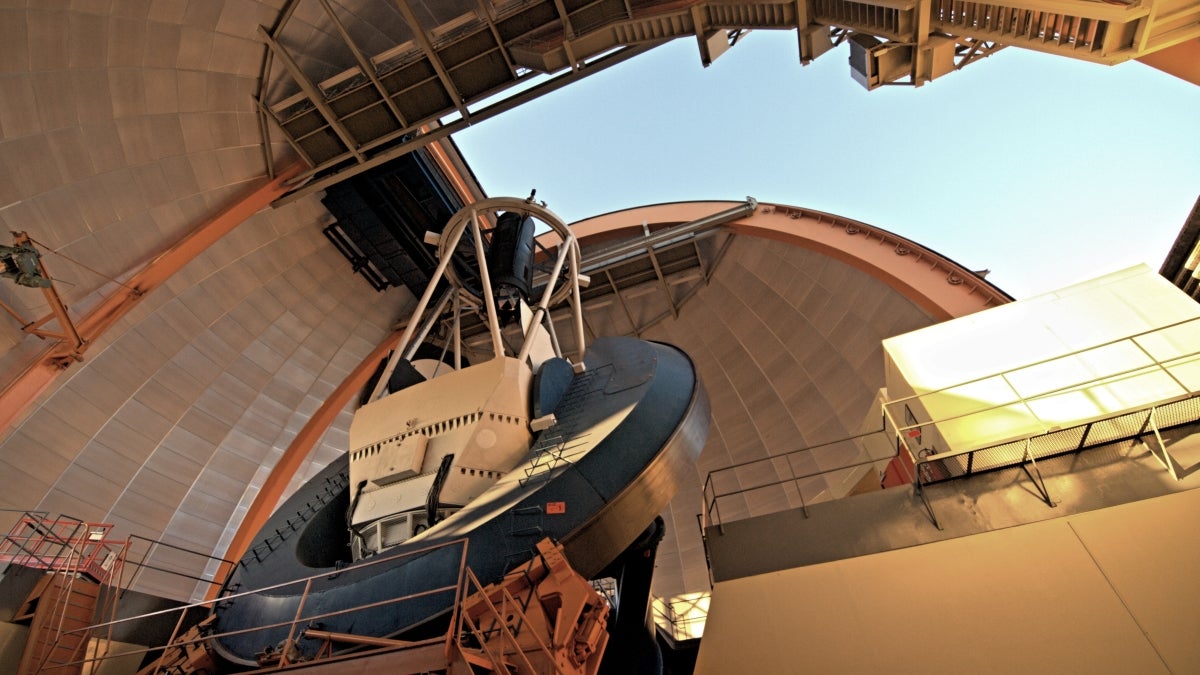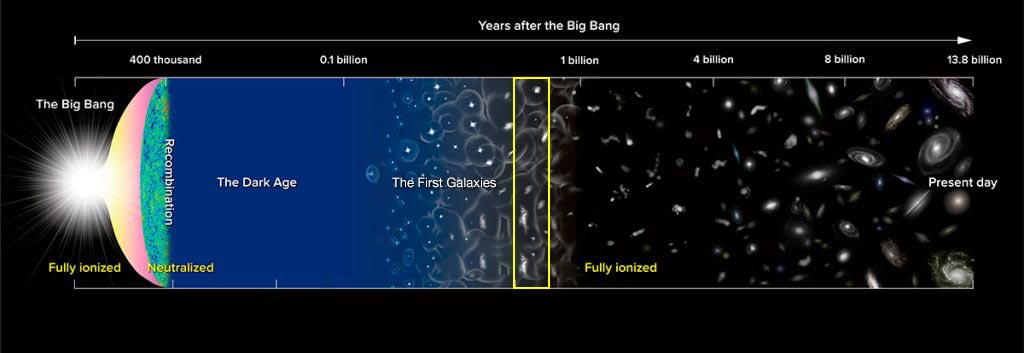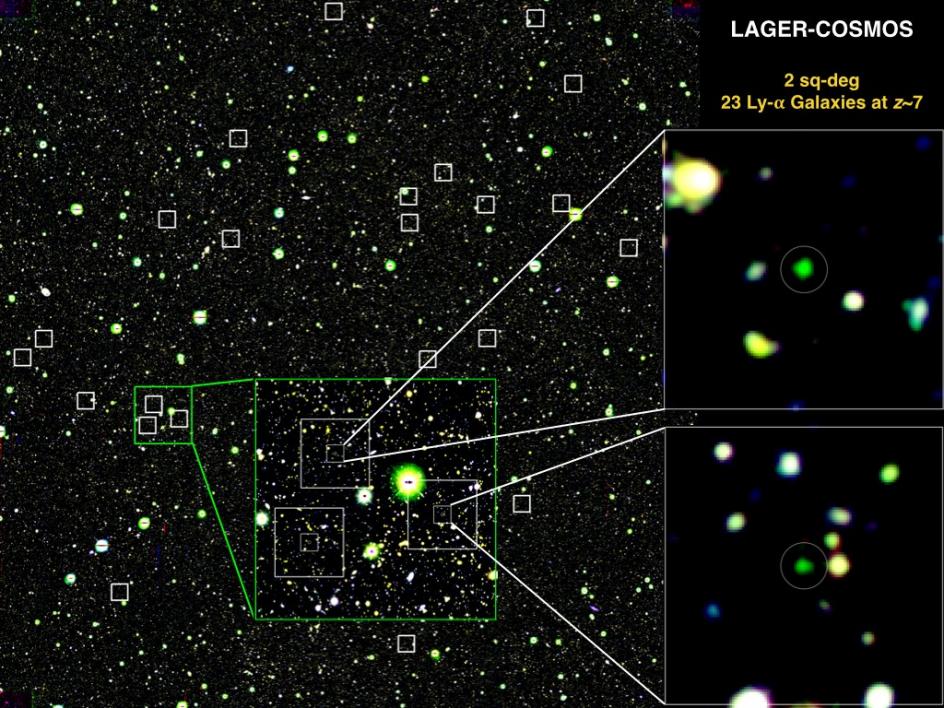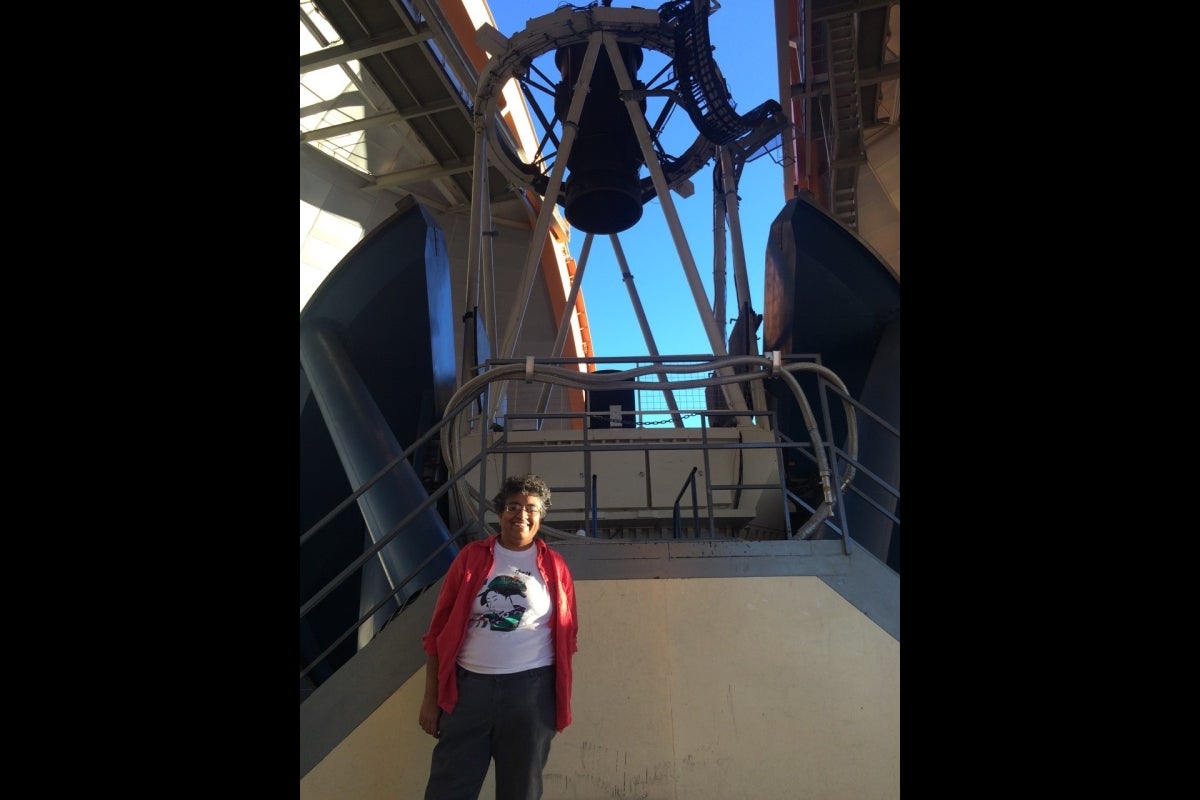ASU astronomers Sangeeta Malhotra and James Rhoads, working with international teams in Chile and China, have discovered 23 young galaxies, seen as they were 800 million years after the Big Bang. The results from this sample have been recently published in the Astrophysical Journal.
Long ago, about 300,000 years after the beginning of the universe (the Big Bang), the universe was dark. There were no stars or galaxies, and the universe was filled with neutral hydrogen gas. In the next half-billion years or so, the first galaxies and stars appeared. Their energetic radiation ionized their surroundings, illuminating and transforming the universe.
This dramatic transformation, known as re-ionization, occurred sometime in the interval between 300 million years and 1 billion years after the Big Bang. Astronomers are trying to pinpoint this milestone more precisely, and the galaxies found in this study help in this determination.
“Before re-ionization, these galaxies were very hard to see, because their light is scattered by gas between galaxies, like a car’s headlights in fog,” Malhotra said. “As enough galaxies turn on and ‘burn off the fog’ they become easier to see. By doing so, they help provide a diagnostic to see how much of the ‘fog’ remains at any time in the early universe.”
Milestones in the history of the Universe (not to scale). The intergalactic gas was in a neutral state from about 300,000 years after the Big Bang until light from the first generation of stars and galaxies began to ionize it. The gas was completely ionized after 1 billion years. The LAGER study takes a close look at the state of the Universe at 800 million years (yellow box) to investigate when and how this transformation occurred. Image courtesy of National Astronomical Observatory of Japan
The Dark Energy Camera
To detect these galaxies, Malhotra and Rhoads have been using the Dark Energy Camera (DECam), one of the new powerful instruments in the astronomy field. DECam is installed at the National Optical Astronomy Observatory (NOAO)’s 4-meter Blanco Telescope, located at the Cerro Tololo Inter-American Observatory (CTIO), in northern Chile, at an altitude of 7,200 feet.
“Several years ago, we carried out a similar study using a 64-megapixel camera that covers the same amount of sky as the full moon,” Rhoads said. “DECam, by comparison, is a 570-megapixel camera and covers 15 times the area of the full moon in a single image.”
DECam was recently made even more powerful when it was equipped with a special narrowband filter, designed at ASU’s School of Earth and Space Exploration (SESE), primarily by Rhoads and Zhenya Zheng (who was a SESE postdoctoral fellow and is currently at the Shanghai Astronomical Observatory in China), with assistance from Alistair Walker of NOAO.
“We spent several months refining the design of the filter profile, optimizing the design to get maximum sensitivity in our search,” said Zheng, the lead author of this study.
Touching the cosmic dawn
The galaxy search using the ASU-designed filter and DECam is part of the ongoing “Lyman Alpha Galaxies in the Epoch of Reionization” project (LAGER). It is the largest uniformly selected sample that goes far enough back in the history of the universe to reach cosmic dawn.
“The combination of large survey size and sensitivity of this survey enables us to study galaxies that are common but faint, as well as those that are bright but rare, at this early stage in the universe,” said Malhotra.
Junxian Wang, a co-author on this study and the lead of the Chinese LAGER team, adds that “our findings in this survey imply that a large fraction of the first galaxies that ionized and illuminated the universe formed early, less than 800 million years after the Big Bang.”
The next steps for the team will be to build on these results. They plan to continue to search for distant star-forming galaxies over a larger volume of the universe and to further investigate the nature of some of the first galaxies in the universe.
Top photo: CTIO Blanco Telescope in Chile. Photo by Tim Abbott/CTIO
More Science and technology

Newly identified viruses found in dolphins
In a new study, researchers from Arizona State University together with national and international collaborators have identified anelloviruses in dolphins for the first time. Anelloviruses are a…
ASU Interplanetary Lab celebrates 5 years of success
Five years ago, an Arizona State University student came up with the idea of creating a special satellite in what was then the newly built Interplanetary Laboratory. The idea was to design…

ASU secures NSF grant to advance data science literacy as demand soars
In an era where data permeates every facet of our lives, the importance of data literacy cannot be overstated. Recognizing this critical need, Jennifer Broatch, a professor at Arizona State…




